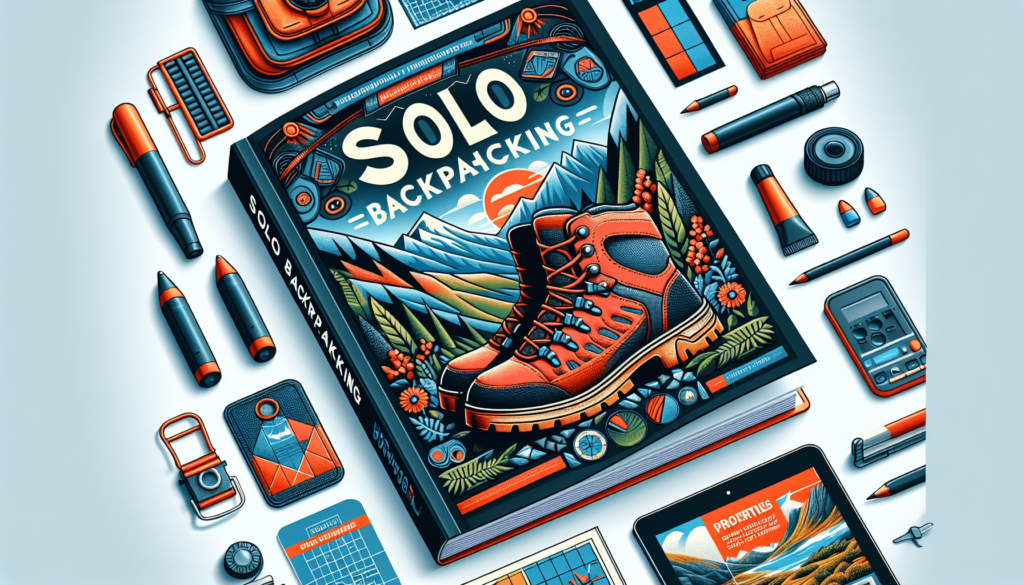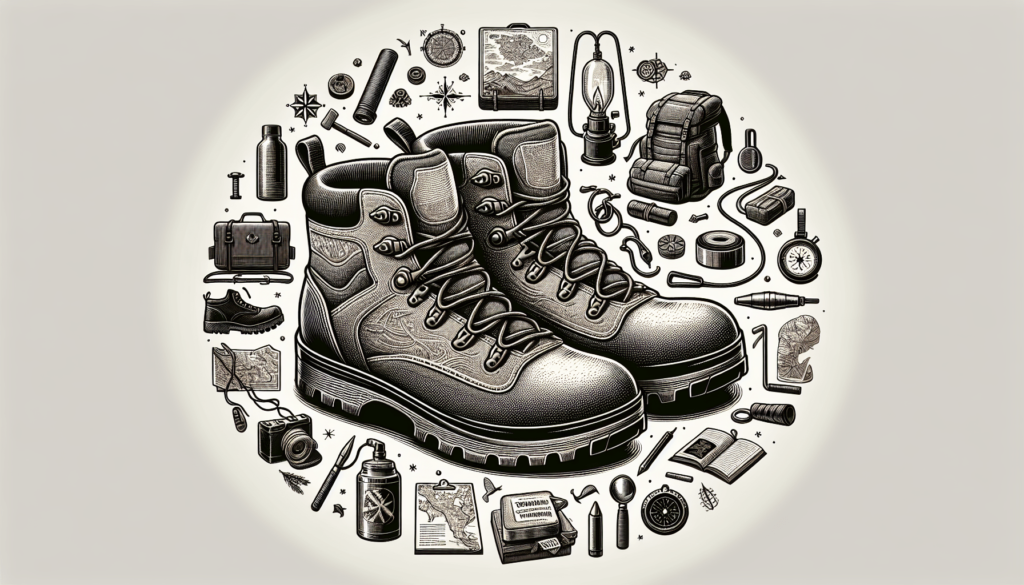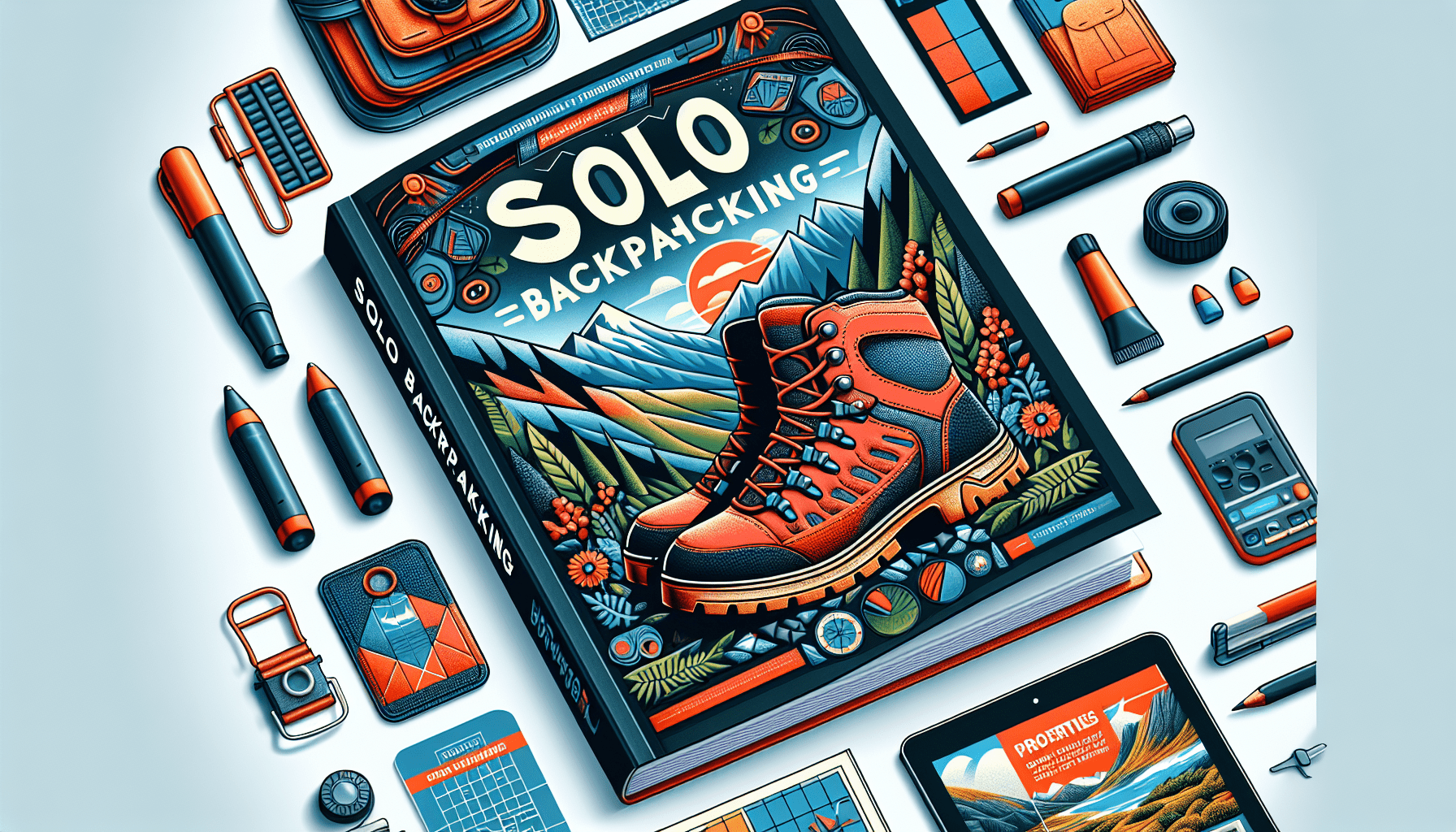Are you ready to embark on an exciting adventure all by yourself? Look no further because “A Beginner’s Guide to Solo Backpacking” is here to help you make the most of your first solo backpacking journey. Whether you’re a seasoned traveler or someone who’s never camped a day in their life, this guide will provide you with all the knowledge and tips you need to have an unforgettable experience. From choosing the right gear to planning your itinerary, we’ve got you covered every step of the way. So pack your bags, leave your worries behind, and get ready to venture into the unknown world of solo backpacking!

Choosing Your Destination
Consider your interests and preferences
When planning a solo backpacking trip, the first step is to consider your interests and preferences. Think about what type of scenery or activities you enjoy the most. Are you more into mountains or coastal landscapes? Do you prefer hiking or biking? By considering your personal interests, you can narrow down the potential destinations and ensure that you choose a location that will truly excite and inspire you.
Research the climate and terrain
Another important factor to consider when choosing your destination is the climate and terrain of the area. Think about what type of weather you prefer and how it may impact your backpacking experience. For example, if you enjoy warmer temperatures, you may want to consider backpacking in a desert region. On the other hand, if you love cooler weather, a mountainous area might be more suitable for your trip. Additionally, consider the terrain of the destination. Are you comfortable with steep inclines and rocky trails, or do you prefer more gradual and well-maintained paths?
Think about safety and accessibility
Safety should always be a top priority when choosing a backpacking destination, especially if you are traveling alone. Research the safety conditions of the area, including any risks of wildlife encounters or hazardous weather conditions. It’s also important to consider the accessibility of the location. How easy is it to reach and navigate? Will you need to arrange for transportation or permits? Ensuring that your chosen destination is safe and accessible will go a long way in making your solo backpacking journey a smooth and enjoyable one.
Planning Your Route
Decide on the duration of your trip
Before you start mapping out your route, it’s important to decide on the duration of your trip. How many days or weeks are you planning to spend on the trail? This will help you determine the distance you can cover each day and ensure that you have enough time to truly explore and appreciate the destination. Keep in mind that backpacking can be physically demanding, so it’s important to pace yourself and allow for rest days if needed.
Map out your route and mark key points of interest
Once you have an idea of how long you’ll be backpacking, it’s time to map out your route. Research the trail systems in your chosen destination and identify the key points of interest that you want to visit along the way. These could be stunning viewpoints, waterfalls, or historical landmarks. By marking these key points of interest on your map, you can plan your daily mileage and ensure that you don’t miss out on any of the highlights.
Consider transportation options
When planning your route, it’s essential to consider transportation options. How will you reach the starting point of your backpacking trip, and how will you get back to your starting point at the end? Research public transportation, shuttle services, or car rental options in the area. It’s also a good idea to have a backup plan in case of any unforeseen circumstances, such as a change in weather or an injury that may require you to alter your route or exit the trail earlier than planned.
Preparation and Packing
Invest in a good quality backpack
One of the most important investments you’ll make for your solo backpacking trip is a good quality backpack. Look for a backpack that fits comfortably on your shoulders and hips, as it will be your trusted companion throughout your journey. Consider the size and capacity of the backpack, ensuring that it can hold all your essentials without being too heavy or bulky. Features such as adjustable straps, multiple compartments, and waterproof materials can also greatly enhance your backpacking experience.
Make a checklist of essential items
Before you start packing, it’s crucial to make a checklist of essential items. This will help you stay organized and ensure that you don’t forget any important gear. Some items to include on your checklist are a tent, sleeping bag, sleeping pad, cooking utensils, headlamp, water bottles, and a stove. Don’t forget to pack a reliable map and compass, as well as a first aid kit and any necessary medications. It’s also a good idea to pack a repair kit for your gear, including duct tape and extra tent stakes.
Pack lightweight and versatile clothing
When it comes to clothing, pack lightweight and versatile items that can be easily layered to accommodate different weather conditions. Opt for moisture-wicking and quick-drying fabrics, as they will keep you comfortable even if you start to sweat. A waterproof and breathable jacket is a must-have for unpredictable weather, while a lightweight down or synthetic insulated jacket can provide warmth in colder temperatures. Don’t forget to pack extra socks and comfortable hiking boots to take care of your feet on long days of trekking.
Navigating on the Trail
Learn how to read a map and use a compass
Navigation skills are essential when backpacking solo. Take the time to learn how to read a map and use a compass before your trip. Familiarize yourself with different symbols and contour lines on the map, as well as how to determine your location and the direction you’re heading using a compass. Practice your navigation skills in familiar surroundings before venturing out on the trail, as this will give you the confidence and knowledge to stay on track during your solo backpacking journey.
Take note of landmarks and trail markers
While reading a map and using a compass is crucial, it’s also important to take note of landmarks and trail markers along the way. These can be natural features, such as distinctive rock formations or rivers, or man-made signs and posts. By paying attention to these markers, you can confirm that you’re on the right path and avoid getting lost. It’s a good practice to periodically check your map and compare it with the surrounding landscape to ensure that you’re still on track.
Stay oriented by frequently checking your position
To stay confidently oriented on the trail, make it a habit to frequently check your position. This involves comparing your current location with the planned route on your map and identifying any upcoming landmarks or trail intersections. Constantly monitoring your position will help you avoid wrong turns, ensure that you’re making progress, and give you peace of mind during your solo backpacking adventure.

Solo Safety Tips
Tell someone your itinerary and check in regularly
When venturing out on a solo backpacking trip, it’s crucial to tell someone your itinerary and check in regularly. Share your planned route, estimated daily mileage, and expected return date with a trusted family member or friend. This way, if something goes wrong or you fail to check in at the designated times, someone will know to initiate a search or notify the authorities. Checking in regularly can be as simple as sending a quick message or making a phone call to confirm your safety and progress.
Pack a first aid kit and learn basic wilderness first aid
When traveling alone in the wilderness, it’s essential to be prepared for potential injuries or medical emergencies. Pack a well-stocked first aid kit that includes bandages, antiseptic ointment, pain relievers, and any necessary personal medications. Additionally, it’s a good idea to familiarize yourself with basic wilderness first aid techniques, such as treating blisters, sprains, and cuts. Taking a wilderness first aid course before your trip can provide you with the knowledge and skills needed to handle common injuries and emergencies.
Be aware of wildlife risks and take necessary precautions
Depending on your destination, wildlife encounters may be a possibility during your solo backpacking journey. Research the wildlife in the area and understand the potential risks. Learn how to properly store your food to avoid attracting animals and causing conflicts. Familiarize yourself with how to safely encounter different types of wildlife, whether it’s bears, snakes, or insects. Carrying bear spray or other wildlife deterrents can provide an extra layer of protection and peace of mind.
Camping and Overnight Stays
Choose and set up your campsite carefully
When it’s time to set up camp for the night, choose your campsite carefully. Look for a flat and level area away from potential hazards, such as dead trees or rocky terrain. Consider the proximity to water sources and the availability of natural windbreaks. Be mindful of any rules or regulations regarding camping in the area, such as designated campsites or permits. When setting up your tent, ensure that it’s properly staked down and guyed out to withstand any strong winds or inclement weather.
Follow Leave No Trace principles
As a responsible backpacker, it’s important to follow Leave No Trace principles to minimize your impact on the environment. This includes packing out all your trash and waste, disposing of human waste properly, and leaving natural objects and artifacts untouched. Avoid shortcuts that can lead to soil erosion, and be mindful of noise pollution that can disturb wildlife and other hikers. By practicing Leave No Trace principles, you can help preserve the natural beauty of the wilderness for future generations.
Be mindful of campfire safety
If you choose to have a campfire during your backpacking trip, it’s crucial to prioritize campfire safety. Check if campfires are allowed in the area and if there are any fire restrictions due to dry conditions or high fire danger. When building a fire, choose a designated fire ring or an existing fire scar to minimize the impact on the surroundings. Keep the fire small and manageable, and never leave it unattended. Before leaving your campsite, ensure that the fire is completely extinguished and cool to the touch.
Food and Water
Plan your meals and pack lightweight, non-perishable food
When it comes to food, planning your meals in advance can save you both weight and space in your backpack. Opt for lightweight, non-perishable food items that are easy to prepare and provide the necessary nutrients to fuel your body on the trail. Dehydrated meals, granola bars, nuts, dried fruits, and instant coffee are popular choices among backpackers. Consider your daily caloric needs and pack extra snacks for energy boosts throughout the day.
Carry a sufficient supply of water and have a filtration system
Staying properly hydrated is crucial during a backpacking trip. Carry a sufficient supply of water to last between water sources, taking into account the duration and intensity of your hike. Depending on the location, you may encounter natural water sources such as streams or lakes. However, it’s important to filter or purify the water before drinking to prevent waterborne illnesses. Invest in a reliable water filtration system or carry water treatment tablets to ensure safe drinking water throughout your journey.
Follow proper food storage techniques to avoid attracting wildlife
Proper food storage is not only important for your safety but also for the preservation of wildlife. In areas where wildlife encounters are possible, it’s essential to store your food properly to avoid attracting animals. Research the specific guidelines for the region you’ll be backpacking in, as they may vary. Options for food storage can range from bear canisters or bear bags to hanging your food from a tree. By following proper food storage techniques, you can minimize the risk of wildlife conflicts and help protect both yourself and the natural inhabitants of the wilderness.
Staying Hygienic
Practice proper hygiene in the outdoors
Maintaining proper hygiene is important for your comfort and well-being during a solo backpacking trip. Practice good personal hygiene by washing your hands with biodegradable soap and water before eating or handling food. If water sources are limited, use hand sanitizer as an alternative. Brushing your teeth and cleaning your face with biodegradable products can also help you feel refreshed and prevent any hygiene-related discomfort.
Pack biodegradable toiletries and dispose of waste responsibly
When it comes to toiletries, opt for biodegradable versions to minimize your impact on the environment. Biodegradable soap, shampoo, and toothpaste are readily available and can help protect water sources and wildlife habitats. Additionally, ensure that you dispose of waste responsibly by following the principles of Leave No Trace. This includes burying human waste in cat holes at least 200 feet away from water sources, campsites, and trails. Pack out all other trash and dispose of it properly in designated receptacles.
Take care of your feet to prevent blisters and discomfort
Your feet are your most important asset when backpacking, so it’s crucial to take care of them. Wear properly fitting and broken-in hiking boots to minimize the risk of blisters and discomfort. Consider using moisture-wicking socks to keep your feet dry, and bring extra pairs to change into if necessary. Take breaks to air out your feet and let them rest. If you start to feel any hotspots or discomfort, address them immediately to prevent them from developing into blisters or more serious foot issues.
Dealing with Emergencies
Know how to handle common backpacking emergencies
Despite taking precautions, emergencies can happen during a solo backpacking trip. It’s important to know how to handle common emergencies, such as sprains, falls, or getting lost. Prioritize your safety and don’t hesitate to seek help if needed. Stay calm and make rational decisions to minimize further risks or injuries. Remember that being prepared with the right knowledge, skills, and equipment can greatly increase your chances of successfully dealing with emergencies on the trail.
Carry essential emergency equipment and know how to use it
When backpacking solo, it’s crucial to carry essential emergency equipment and know how to use it. This includes a well-stocked first aid kit, a whistle for signaling for help, a headlamp or flashlight, a multi-tool, a fire starter, and a lightweight emergency shelter. Additionally, consider carrying a personal locator beacon (PLB) or satellite communication device that can be used to call for help in remote areas without reliable cell phone coverage. Familiarize yourself with how to operate these tools before setting out on your journey.
Stay calm and think clearly in stressful situations
In any emergency situation, it’s important to stay calm and think clearly. Panic can cloud your judgment and lead to poor decisions. Take deep breaths, assess the situation, and prioritize your needs. Remember the skills and knowledge you’ve acquired during your trip preparation, and trust in your ability to handle the situation. By staying calm and thinking clearly, you can effectively manage the emergency and increase your chances of a positive outcome.
Enjoying Your Solo Journey
Take time to appreciate the beauty of nature
While the practical aspects of solo backpacking are important, it’s equally crucial to take the time to appreciate the beauty of nature. Slow down and immerse yourself in the sights, sounds, and smells of the wilderness. Take breaks to photograph stunning vistas or admire delicate wildflowers. Whether you’re gazing up at towering peaks or sitting by a serene alpine lake, allow yourself to be present and thoroughly enjoy the moments of solitude and connection with nature.
Embrace the solitude and self-reflection
Solo backpacking provides a unique opportunity for solitude and self-reflection. Embrace this chance to be alone with your thoughts and emotions. Use the quiet moments on the trail to reflect on your life, goals, and aspirations. Disconnect from technology and immerse yourself in the simplicity and beauty of the natural world. Solo backpacking can be a transformative experience, allowing you to gain perspective, find inner peace, and discover a renewed sense of self.
Challenge yourself and enjoy the sense of accomplishment
Solo backpacking is not without its challenges, but it’s these challenges that make the experience so rewarding. Embrace the physical and mental challenges of the trail, as they provide an opportunity for growth and personal achievement. Push yourself outside your comfort zone, climb that steep mountain pass, or conquer your fear of camping alone in the wilderness. As you overcome these challenges, you’ll develop resilience, self-confidence, and a deep sense of accomplishment that will stay with you long after your solo backpacking journey comes to an end.
In conclusion, solo backpacking can be an incredible adventure that allows you to fully immerse yourself in the beauty of nature and discover your own strength and resilience. By carefully choosing your destination, planning your route, and packing the necessary gear, you can embark on a safe and enjoyable solo journey. Use this beginner’s guide as a starting point to begin your solo backpacking adventure and create unforgettable memories in the great outdoors. Happy trails!

